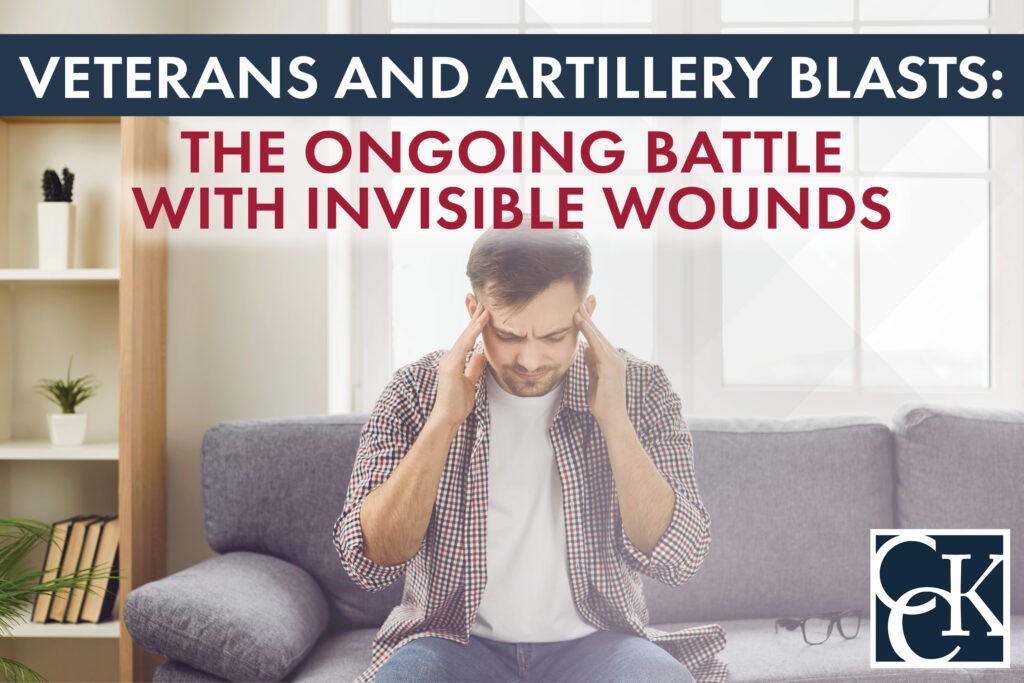Veterans and Artillery Blasts: The Ongoing Battle with Invisible Wounds

CCK Law: Our Vital Role in Veterans Law
In 2016, the U.S. military launched an offensive against ISIS, employing a strategy of using heavy artillery to minimize troop numbers on the ground.
While this approach was effective on the battlefield, it has led to ongoing struggles for many service members. As an investigation by The New York Times revealed, veterans of these artillery units are now contending with health issues that were unforeseen and, in many cases, remain untreated due to a lack of proper diagnosis.
The Unseen Impact of Heavy Artillery
Upon returning home, these veterans faced a new enemy: a range of debilitating symptoms that eroded the quality of their daily lives. Many of these veterans began to face symptoms like:
- Insomnia;
- Chronic confusion;
- Memory loss;
- Severe anxiety;
- And more.
These symptoms were often not recognized as related to their service, largely because the military health screenings were not tailored to detect the subtle and cumulative effects of repeated artillery blast exposure.
Was Firing Heavy Artillery Safe for Gun Crews?
While military guidelines indicated that it was safe for gun crews to fire these rounds, the guidelines did not account for the intensity and frequency of firing that these soldiers endured. The screenings designed to detect brain injuries (e.g., a TBI) were focused on identifying the impacts of singular, large explosions typically associated with enemy attacks, not the consistent, repeated firing of heavy artillery.

The Consequences of Misdiagnosis
As a result of this oversight, many artillery veterans received misdiagnoses, which led to ineffective or even harmful treatments. Some were told they suffered from attention deficit disorder, depression, or post-traumatic stress disorder, and were prescribed medications that did little to alleviate their symptoms.
These misdiagnoses not only affected the veterans’ ability to receive proper care but also impacted their military careers, leading to lost opportunities for promotion and, in some cases, punitive discharges. This removal from service often came with the added penalty of being cut off from essential VA healthcare benefits.
The ramifications of these undiagnosed conditions have been far-reaching. Veterans have found themselves struggling to maintain relationships, with marriages suffering under the strain of untreated symptoms. Employment became a challenge, contributing to financial instability and, for some, homelessness. Tragically, there has been a noticeable increase in suicides among this group, underscoring the severity of the crisis.
What Has Research Revealed About the Damage Caused by Blast Exposure?
Current research is slowly uncovering the hidden risks of blast exposure, suggesting that even small blasts, experienced repeatedly, can cause lasting microscopic damage to the brain. However, this type of injury is extremely difficult to detect with standard brain scans or blood tests. Efforts are underway to develop new diagnostic tools and treatment protocols, but these advancements cannot come quickly enough for many veterans.
The Push for Better Protection
In response to advocacy by veterans’ groups, Congress has tasked the Pentagon with assessing the risks associated with firing heavy weapons and developing new safety protocols. There are reports of new programs intended to track and limit daily blast exposure for troops, but many service members report not seeing these changes in practice.
Getting Veterans with Brain Injuries the Help They Deserve
The invisible wounds of artillery veterans represent an urgent and ongoing concern. More research will need to be conducted to understand the full scope of how these veterans are being affected.
If you are a veteran who has been denied VA disability benefits for a brain injury caused by your military service, the veterans’ advocates at Chisholm Chisholm & Kilpatrick may be able to help. Our team has decades of collective experience helping veterans win the VA disability compensation they deserve, including compensation for traumatic brain injuries. Call us today for a free case evaluation.
About the Author
Share this Post
